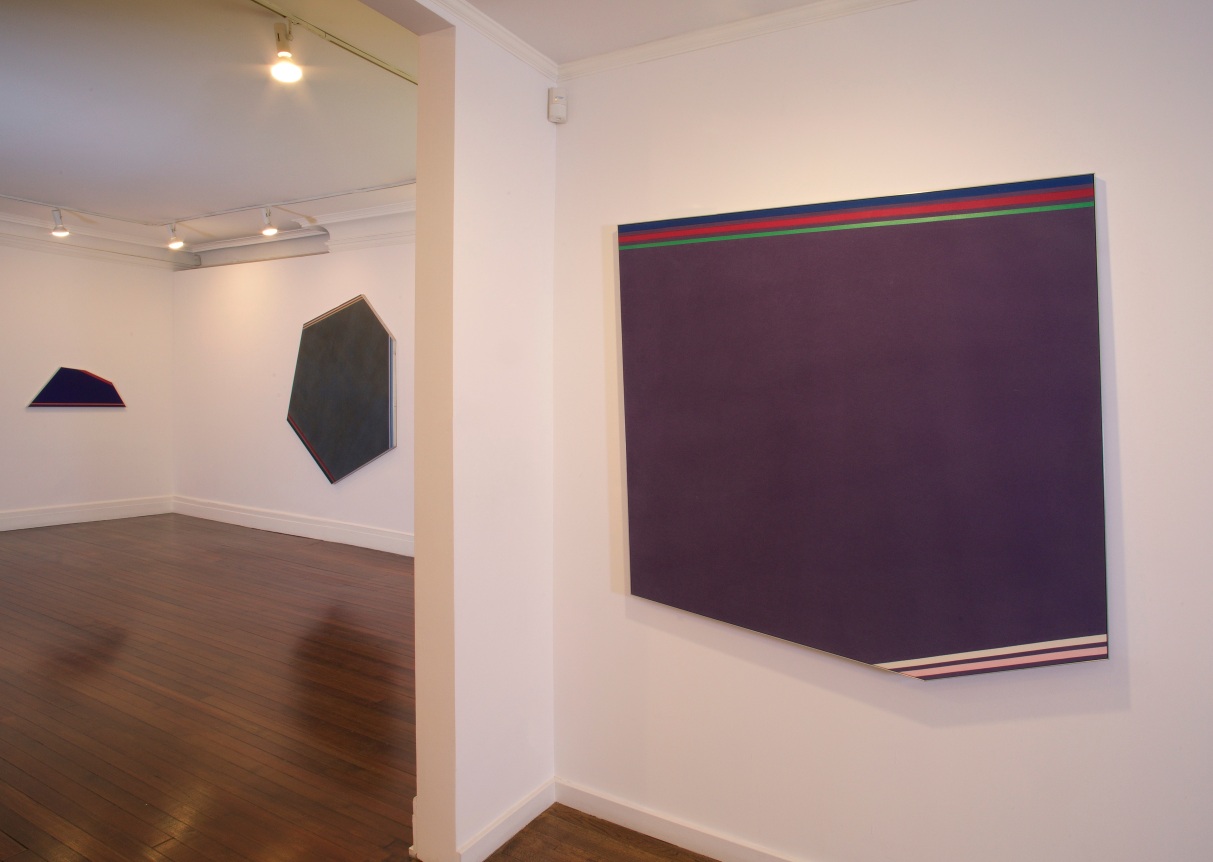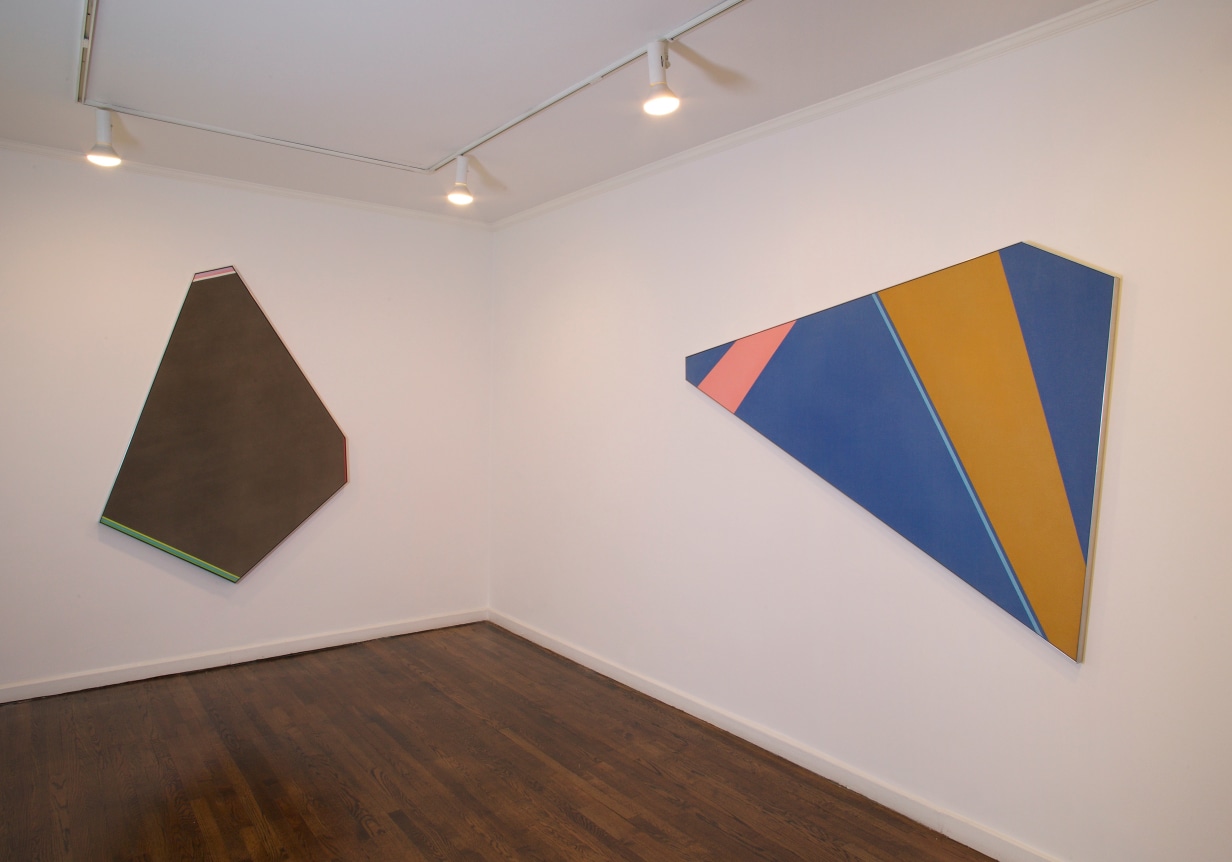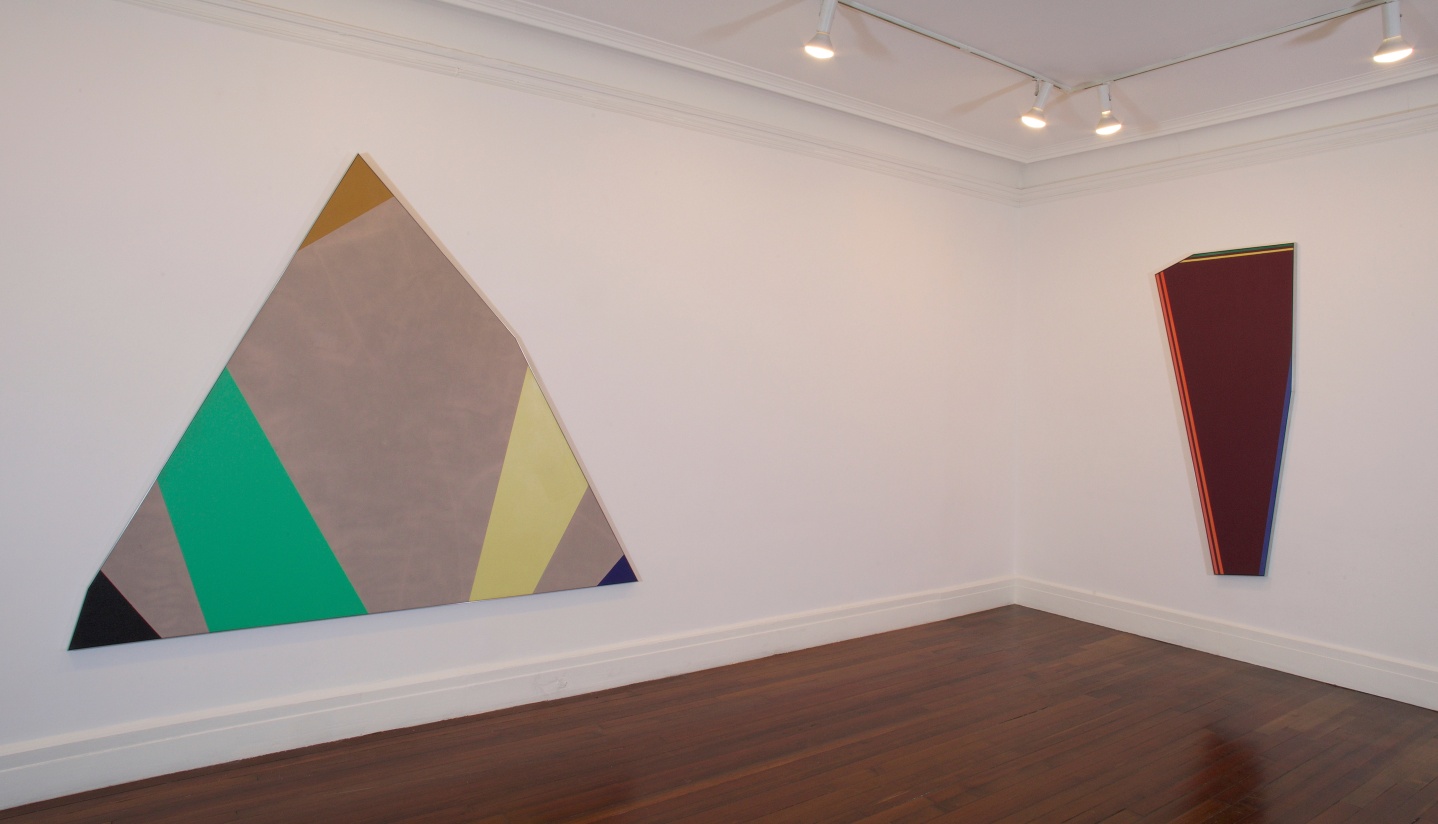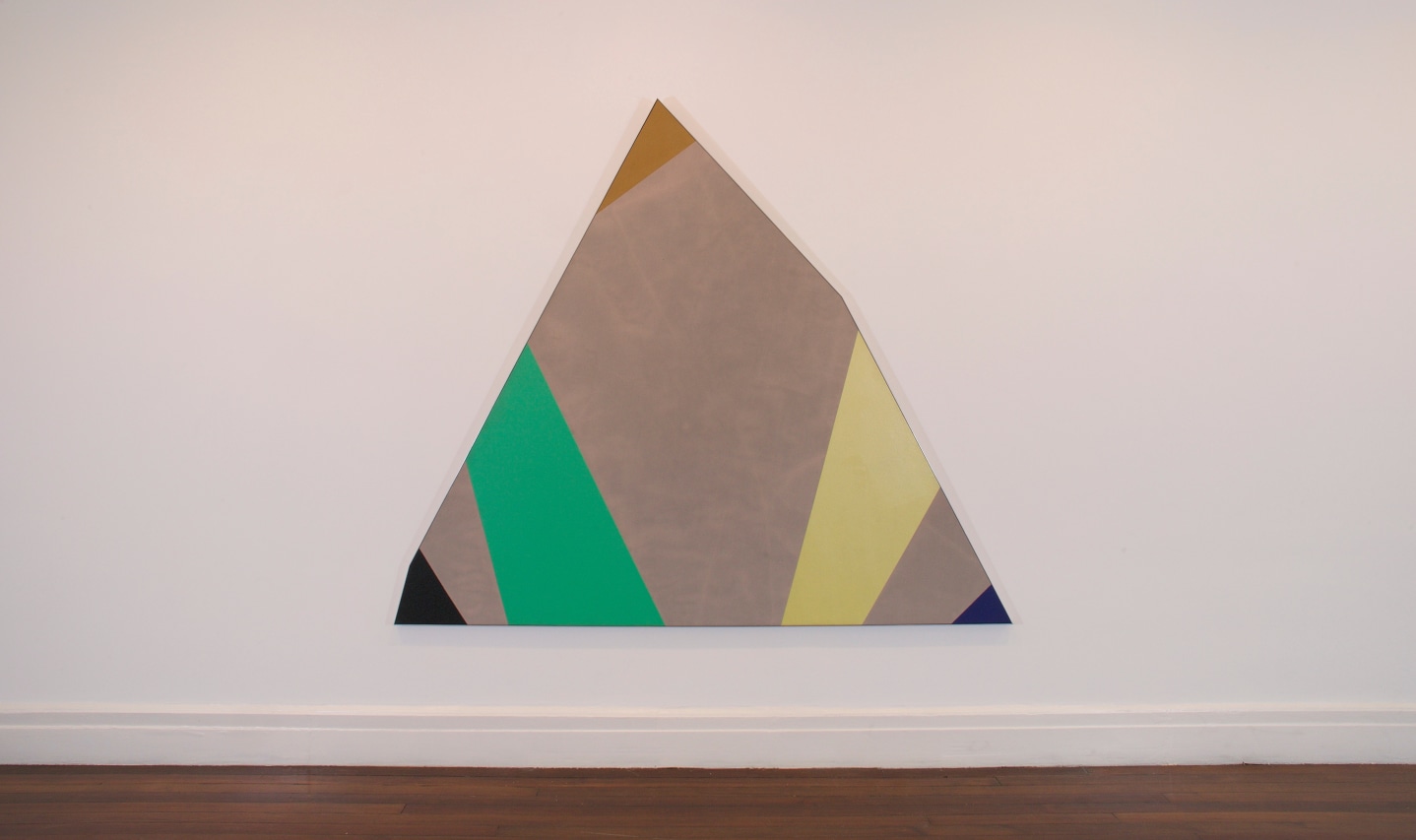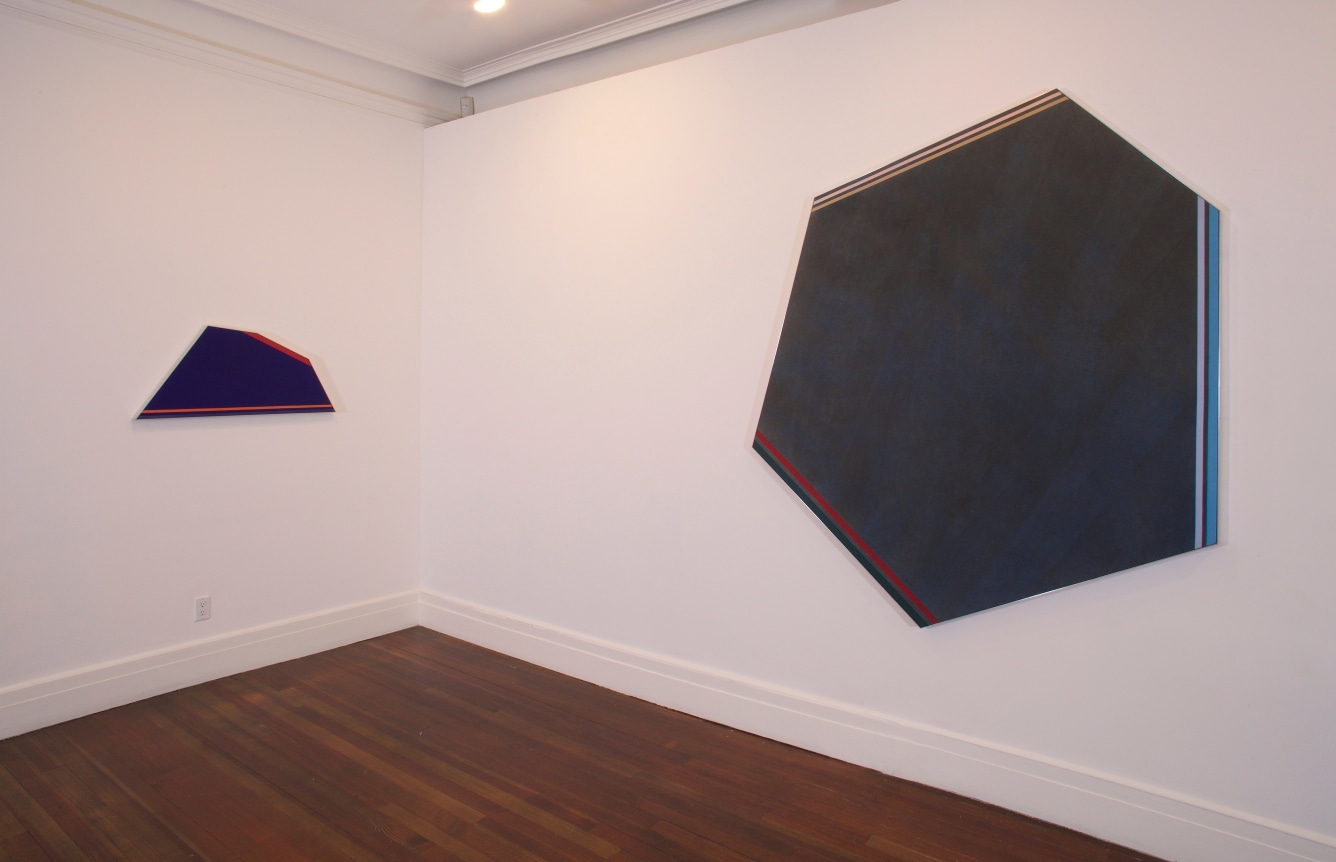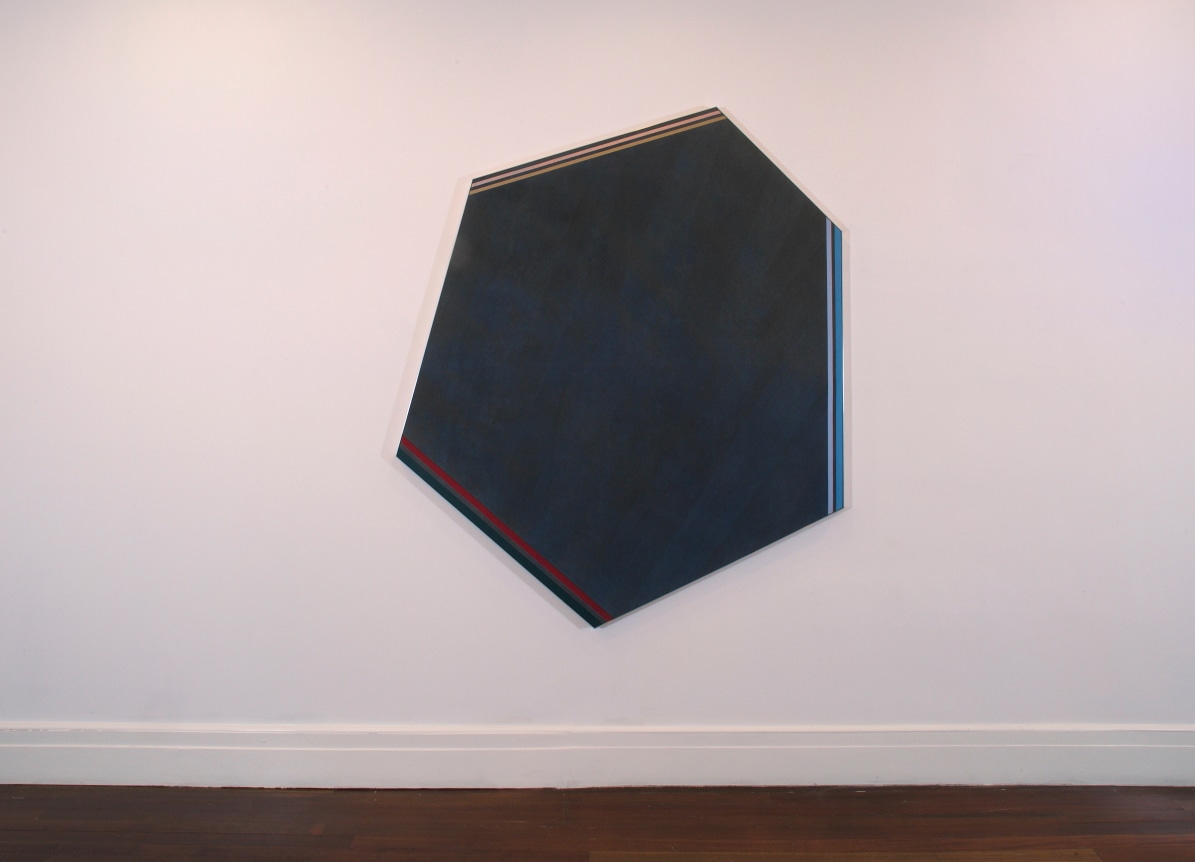Castelli Gallery in New York and Honor Fraser in Los Angeles are pleased to present Kenneth Noland: Color and Shape 1976–1980, two exhibitions of shaped paintings by color field artist Kenneth Noland. Noland had his first exhibition at Castelli Gallery in 1976, followed by two additional shows in 1979 and 1995. This is the first exhibition by the artist at Honor Fraser.
The relationship between the shape of the canvas and the painted image is a central concern of Noland’s work. In 1965 art historian Michael Fried wrote, “In Noland’s paintings neither color nor structure seems to come first, to subsume or generate the other.” In addition to squares and rectangles, Noland also consistently employed tondo and diamond forms; as William C. Agee recently observed, “By 1972 he had exhausted the possibilities of color usage in his highly controlled formats—the circles, chevrons, stripes, and plaids. (...) The ‘simple’ order, clarity, and directness of the 1960s had to give way to greater complexity—more area, more volume, new shapes, greater variety in surface and touch in the new work.”
The unprecedented level of asymmetrical shaping Noland introduced to his pictures in the mid 1970s is evident in the works on view in the two exhibitions. The irregularly shaped canvases of works like Added Touch, 1976, and Orientate, 1976, contain broad, contrasting bands of flat colors, in apparent contrast to the thin stripes of color that follow and mark the edges of works like Dusk Affair, 1977, and Angle of the Night, 1978. Each work is a unique investigation unto itself.
Of the work from this period, Noland said to Diane Waldman, “It’s been on my mind—what would something be like if it were unbalanced? It’s been a vexing question for a long time. But it took the experience of working with radical kinds of symmetry, not just a rectangle, but a diamond shape, as well as extreme extensions of shapes, before I finally came to the idea of everything being unbalanced, nothing vertical, nothing horizontal, nothing parallel. I came to the fact that unbalancing has its own order. In a peculiar way it can still end up feeling symmetrical.”
Noland’s shaped canvases were last exhibited in New York more than 20 years ago, and have never before been on display in Los Angeles. Forty years after these works were created, Castelli Gallery and Honor Fraser present a comprehensive and fresh perspective on this distinctive period of Noland’s career.

